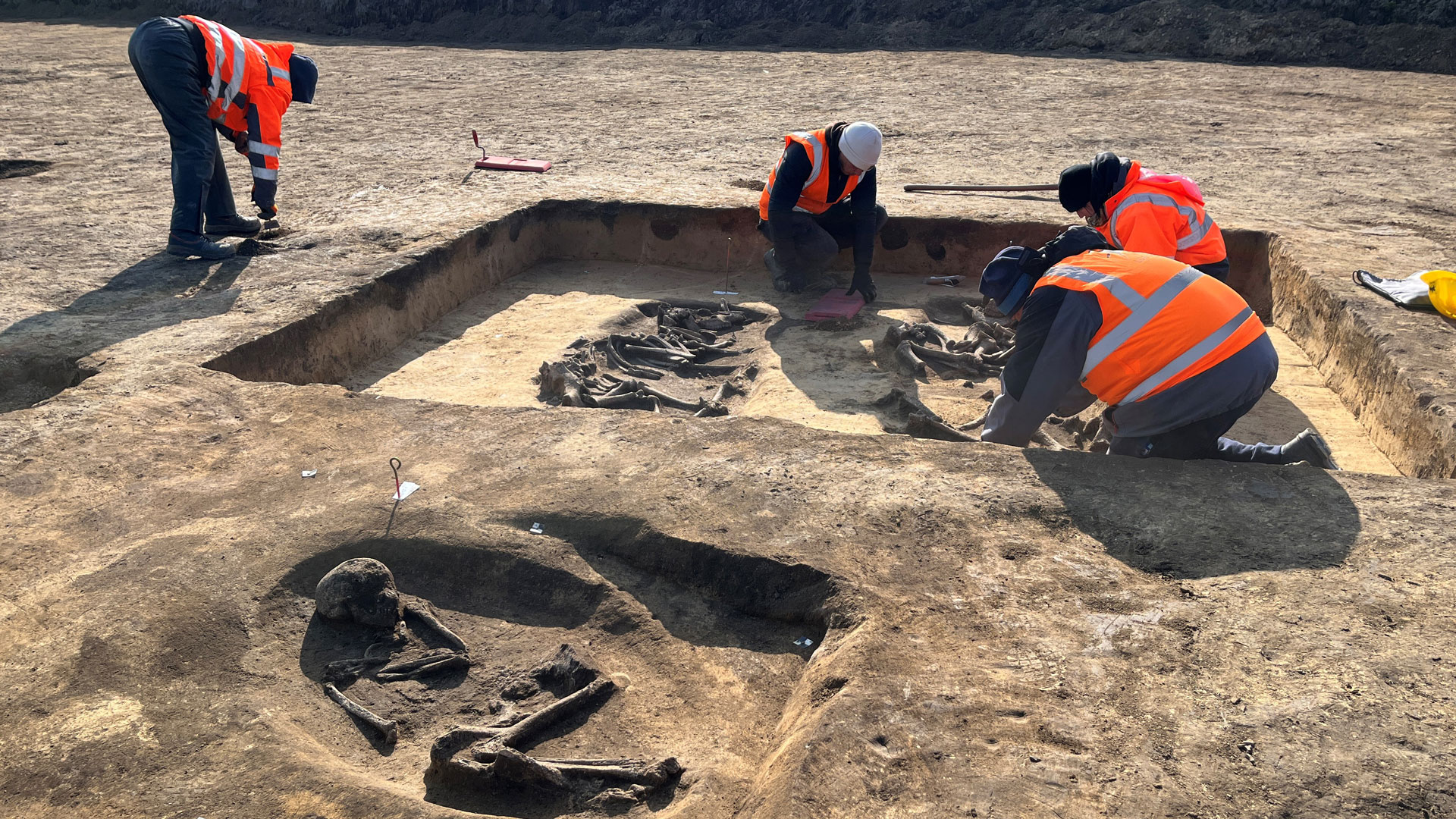Intel's Germany chip fab site yields discovery of 6,000-year-old burial mounds — no word yet about potential construction delays
A chariot grave was also found at the proposed Magdeburg site.

Archaeologists working at the site where Intel plans to develop a series of multi-billion dollar chip fabs in Germany have discovered two prehistoric burial mounds. The State Office for Heritage Management and Archaeology Saxony-Anhalt (LDA) examined the 300-hectare industrial park area ahead of site development works and unearthed two approximately 6,000-year-old monumental wooden chambers containing multiple human and animal remains. Sometimes, archaeological discoveries have caused significant delays to associated building projects, so Intel management could have concerns. However, the LDA press release doesn't mention any potential delays, saying that research and excavations started last year and are scheduled to be finished this April.
The above images clearly show human and animal remains. The LDA explains that two large trapezoidal wooden burial chambers, 20 and 30 meters long, were built 200 meters apart at the proposed Intel Magdeburg site. These were probably constructed by the Baalberg people, whose culture dominated Central Germany and Bohemia from 4100 to 3600 BC.
The LDA investigations suggest a corridor between the mounds was formed for ritual processions during the Globular Amphora Culture (3300 to 2800 BC). In one of the above images, where a human skeleton is in the foreground, it is thought that evidence of a 'chariot grave' has been uncovered. This type of Neolithic burial is characterized by a person being buried in front of a cart and the towing animals "creating the image of a cart with a driver or a plow pulled by cattle." The archaeologists say the human remains are from a 35 to 40-year-old man and that the cattle were 2 to 3 years old at the time of their sacrifice.
The LDA's discoveries are described as spectacular by the press release, but it wasn't that surprising to find ancient burials in this area. In the planned industrial park area, these burial mounds formed a small hill called the Eulenberg in an otherwise moderately flat or undulating environment. Such uniform geographic features are often found to be manmade.
Intel Fab 29 in Germany is scheduled to come online in Q4 2027
Remember, Magdeburg will probably be Intel's largest and most important site in Europe. The first two fabs are scheduled to come online in late 2027, and Intel will assess the viability of up to six additional fab modules.
Returning to our concerns about whether Intel's construction plans might be affected by the archaeological discoveries, and the scale of any interruption in the construction of the first two semiconductor factories, we have reached out to Intel for comment.
Get Tom's Hardware's best news and in-depth reviews, straight to your inbox.

Mark Tyson is a news editor at Tom's Hardware. He enjoys covering the full breadth of PC tech; from business and semiconductor design to products approaching the edge of reason.
-
slightnitpick Replythe cattle were 2 to 3 years old at the time of their sacrifice.
Poor bovines. They had years more of life to enjoy. -
vijosef The wheel was discovered in Iraq, 6000 years ago. If Germans had wheels at the same date, it would be a major discovery. All history would had to be rewritten, and it would be a major mystery why Germans lost the wheel.Reply
This article looks like a broken telephone. Something was lost in translation. -
slightnitpick Reply
From the article:vijosef said:The wheel was discovered in Iraq, 6000 years ago. If Germans had wheels at the same date, it would be a major discovery. All history would had to be rewritten, and it would be a major mystery why Germans lost the wheel.
This article looks like a broken telephone. Something was lost in translation.
'chariot grave' has been uncovered. This type of Neolithic burial is characterized by a person being buried in front of a cart and the towing animals "creating the image of a cart with a driver or a plow pulled by cattle."
So basically the general term is "chariot grave", but it can include a chariot or a plow, or presumably other things (sleds?) pulled by animals. Wheels are not always required.
From Wikipedia there is evidence of (animal pulled) plowing almost as far back as 6000 years ago in this general region, and reason to believe it could have existed as early as 8000 years ago: https://en.wikipedia.org/wiki/Plough#Ard -
t3t4 Well I hope it all goes to plan..... Nothing can stop progress quite like a couple of old bones!Reply
